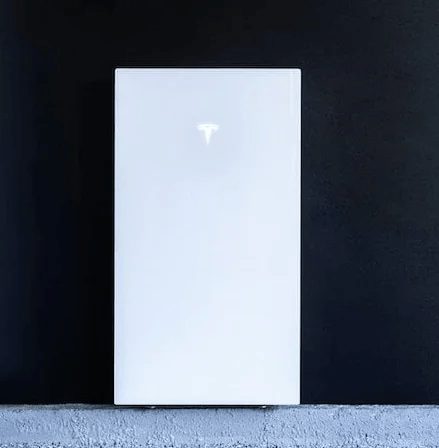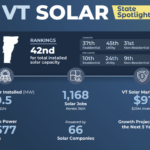
In a time when solar in California has been taking a hit, it’s encouraging to see new incentives pop up to help homeowners go solar and add storage. California has long been a precursor to the rest of the United States, and seeing a successful program implemented by a utility can signal positive change for other utilities across the country.
Table of Contents
Program Definitions and Eligibility
San Diego Community Power (SDCP) is a Community Choice Aggregate (CCA) program. CCAs are not to profit public agencies that partner is electric utilities to bring clean energy options to homeowner. Specifically, SDCP partners with San Diego Gas & Electric to serve San Diego, Chula Vista, Encinitas, Imperial Beach, La Mesa, National City, and some unincorporated areas of San Diego County. They designed this incentive to support solar and battery adoption in their service territory.
Battery incentives are becoming increasingly popular among utilities because they enable the utility to better manage high demand. This program incentivizes homeowners with batteries to discharge (send energy stored in the battery to the home or grid) during the “on-peak” hours of 4pm-9pm.
Generally, the afternoon or early evenings are when the most power is being consumed by users on the grid, homeowners discharging power from their battery helps the utility reduce the need to to ramp up power plants to meet demand.
The SDCP Battery Program establishes both an upfront incentive and performance based incentive to those enrolled for solar and battery products. The performance incentive only applies to the battery and is based on the total energy discharged during a pre-set 2-hour period (event window) for 2024 and 2025, but they say that future program years may have longer or shorter windows.
Source: San Diego Community Power
In order to enroll in the program, participants must:
- Be an active SDCP customer
- Have a system interconnected and permitted by your local AHJ (authority having jurisdiction)
- Battery charged only from solar, no grid charging allowed
- Battery cannot be a part of other active demand programs
- Be a new battery installation, existing systems are not yet eligible
- Work with an approved contractor
- Install battery from an approved manufacturer
- Battery must be installed after the SDCP application is submitted
Incentive Amounts
The SDCP program splits the upfront incentive into two parts based on the customer. Those in market rates -average customers- and non-market rates – customers in CARE/FERA and communities of concern. The ladder applies to customers participating in government assistance programs or living in low income/underserved communities.
Market rate customers do not get any upfront solar incentive and receive a lesser value of upfront battery storage incentive. Both categories of customer are eligible for the same performance incentive and have the same event windows.
The following table shows the rates and amount of incentives available:
Source: San Diego Community Power
As you can see from above, eligible batteries can claim $350/kWh of usable capacity as an upfront incentive. Usable capacity is an important word here because some batteries have a lower usable capacity compared to their total rated capacity, called “nameplate capacity”. Think of this like if you had a gallon jug of milk but you were only able to pour 3 quarts out of it. The nameplate capacity would be 1 gallon, but usable capacity would be 3 quarts.
An Example Calculation
Take the Tesla Powerwall 3 for an example; the usable capacity is 13.5 kWh, so a person installing one Tesla Powerwall 3 would be eligible for $4,725 upfront incentive.
13.5 kWh * $350/kWh=$4,725
The upfront incentive alone can cover a huge portion of the battery cost. On top of that is the performance incentive, which is an ongoing annual payment that varies depending on how much power a customer elects to discharge during the event window. If we assume our example homeowner wants to discharge 70% of their battery during the event window, we need to know what discharge rate would discharge 70% over 2 hours. To get this:
(13.5 kWh / 2 hours) * 70%=4.725 kW
Then, assuming this same discharge level is able to be met every day:
4.725 kW*2 hours*365 days*$0.10/kWh=$344.92
Our example homeowner would get a $4,725 upfront credit to help offset the installation cost and annual payments of $344.92 for the on-peak discharging.
So What’s the Catch?
A payment of these amounts can really be tempting for a homeowner. But there are a few considerations to make before diving into applications.
Battery Performance
Per program guidelines, the battery must perform at 90% or above of the enrolled capacity discharge every month in order to qualify for performance incentive. If your discharge is not able to meet your enrolled amount, you forfeit credit for that month.
In winter months with less sunshine it may be harder to charge the battery only from solar, and if your home experiences frequent blackouts you may use your power for backup.
Limited Capacity For Backup
Speaking of backup, if you experience frequent blackouts and want to keep power for emergencies, having a minimum of 50% of your battery drawn every evening puts you behind the 8-ball. There’s potential for a situation where you need backup power and your battery can’t supply it.
Incentive Clawback
Homeowners can unenroll from this program at any time, however, if unenrollment happens within the first five years, a portion of the upfront incentive will be clawed back.
Source: San Diego Community Power
Limited Budget
The upfront incentive has a limited budget for SDCP’s fiscal year (July 1-June 30). Once the budget is used up remaining projects will go on a waitlist, should it become available. Waitlisted projects will receive funding on a first-come-first-serve basis if existing projects cancel. The performance incentive is separate from this budget.
Conclusion
Overall this incentive can provide a lot of money to homeowners looking to add battery storage and ease the financial burden of doing so. Interested homeowners should work with their chosen installer to determine the specs on their storage solution and what value their specific incentive holds. Make sure to establish early on in the conversation whose responsibility it is to file the applications so nothing gets missed.
Homeowners should also make sure to have their equipment secured by an insurance-backed warranty to ensure the battery and solar equipment is protected for long after the manufacturer warranties end.
The comprehensive list of approved contractors, approved batteries, and remaining program budget can be found on the San Diego Community Power website here.
The full terms and conditions of the Solar Battery Savings program can be found here.


